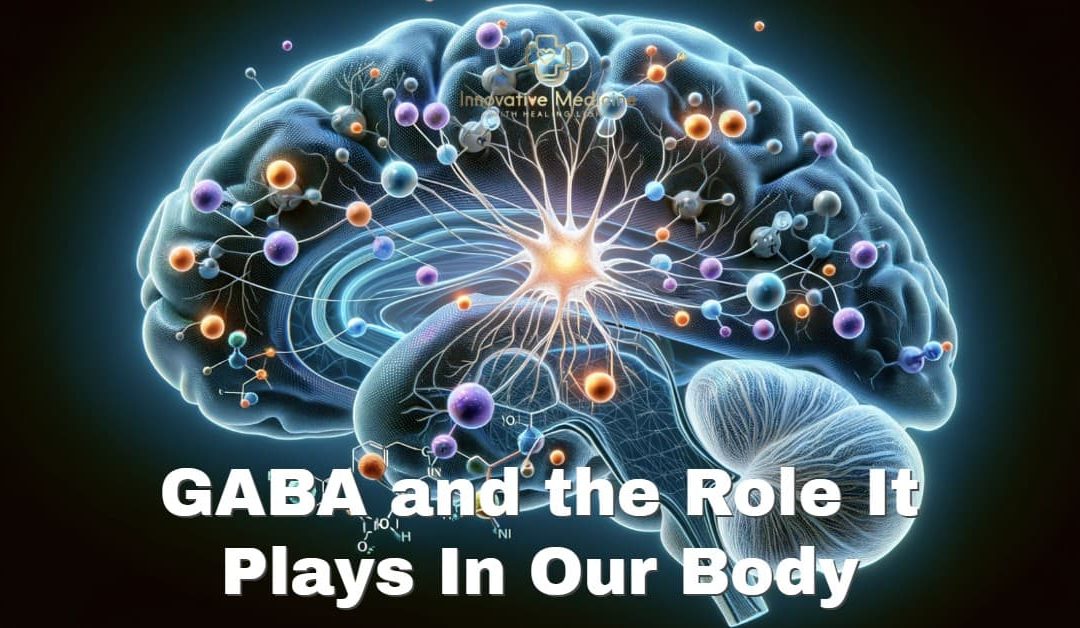One of the most important neurotransmitters for the human body is called gamma-aminobutyric acid or GABA. It is a neurotransmitter widely distributed in the neurons of the cerebral cortex, as gamma-aminobutyric acid is a type of substance used by the neurons of the nervous system when communicating through the synapse. However, GABA is only one of many kinds of neurotransmitters that act in the brain. That is why it performs some functions that other neurotransmitters do not.
Neurons are separated by a narrow junction called a synapse. To transmit a signal, the neuron must first release biochemical substances called neurotransmitters, filling the synapse and activating the neighboring cell. It is then that the impulse can flow across the synapse thanks to a process known as synaptic transmission. This is how the brain sends messages to the body to activate muscles, and sensory organs can send messages to the brain.
The Importance of GABA
Gamma-aminobutyric acid or GABA is a set of chemical components of the nervous system, which are released by neurons into the synaptic space. They inhibit electrical signals, causing the membrane to depolarize and then return to rest. But for GABA neurotransmitters to perform their tasks, they need various receptors located on the cell membrane. As gamma-aminobutyric acid is an element that works in neuronal connections, it is essential not only to inhibit nerve impulses but also to act in stress situations, cognitive processes, anxiety disorders, and movement control.
Therefore, it is due to its work in the regulation of different psychological mechanisms that, when depleted, can lead to changes in sleep patterns, depressive and anxiety disorders.
Gamma-aminobutyric Acid Functions
The primary function of gamma-aminobutyric acid is to provide a sense of calm. Thus, having balanced GABA levels keeps our anxiety levels in check; this facilitates a feeling of relaxation, calm, and peace. GABA’s role is to reduce or inhibit neuronal activity, and it plays a vital role in behavior, cognition, and the body’s response to stress. Scientists have evidence to say gamma-aminobutyric acid provides control of anxiety and fear when neurons are overexcited.
Other functions in which GABA is involved include sleep processes, vision, muscle tone, motor control, and growth.
Sleep facilitation: gamma-aminobutyric acid is known to aid sleep. Specifically, it has been shown that taking a dose of between 0.5 and 5g of GABA before bedtime stimulates melatonin production and reduces arousal in the body (and brain).
Growth: GABA also boosts the synthesis of growth hormones. This hormone is responsible for muscle growth during sport and tissue regeneration during the night. Thus, some studies suggest that gamma-aminobutyric acid is involved in muscle growth (especially when we sleep).
The brain has two types of gamma-aminobutyric acid receptors, GABAA, and GABAB. The former is fast receptors, and the latter is slow receptors. It is estimated that around 20%-50% of all synapses contain ionotropic GABA A-type receptors.
GABA Disorders
When alterations in normal GABA levels occur, we find psychiatric and neurological diseases. However, alcohol, drugs, smoking, and other medications, such as Valium, can also alter gamma-aminobutyric acid levels. Alcohol enhances or boosts the inhibition of neuronal activity by gamma-aminobutyric acid, resulting in a certain euphoria. Excess GABA can lead to respiratory failure and even death. Some of the most frequent diseases caused by these alterations are:
- Epilepsy.
- Anxiety.
- Depression.
- Schizophrenia.
Their treatment includes the aforementioned drugs as well as other drugs or practices recommended by the medical team. In anxiety, gamma-aminobutyric acid levels are reduced, and the central nervous system is overexcited. It is also often associated with stress. Epilepsy may also be due to this factor, apart from its genetic component. The hallucinations (olfactory and gustatory) characteristic of schizophrenia are also associated with decreased neurotransmitter levels.
As we have seen, high levels of gamma-aminobutyric acid are associated with relaxation, which, if not controlled, can lead to depression and even apathy in the subject. Several studies claim that these abnormal values may be related to Alzheimer’s disease. Sleep disorders include insomnia and sleep paralysis. In the first case, low levels of the compound do not allow the characteristic relaxation of the process. In the second, high levels of gamma-aminobutyric acid cause the person to wake up while their body is in the sleep phase with rapid eye movements and immobilization (REM).
Increasing GABA Production
GABA levels can be increased with foods with high levels of glutamic acid and with dietary supplements. Foods with glutamic acid that increase gamma-aminobutyric acid. These are foods capable of increasing gamma-aminobutyric acid and their glutamic acid content per 200 grams:
- Almonds (10.3 g.)
- Bananas (220 mg.)
- Broccoli (740 mg)
- Brown rice (940 mg.)
- Halibut (7.9 g.)
- Lentils (2.8 g.)
- Oat flakes (7.4 g.)
- Oranges (210 mg.)
- Potatoes (830 mg.)
- Rice bran (3.7 g)
- Spinach (680 mg)
- Walnuts (5.4 g.)
- Whole wheat (8.6 g.)
Probiotic foods, i.e., yogurt, kimchi, and sauerkraut, are also recommended. On the other hand, cutting down on caffeine is a good idea, as it disrupts the functions of the neurotransmitter. It can be replaced by tea.
Finally, physical exercise is another ally in the secretion of gamma-aminobutyric acid. However, yoga is the most recommended, as it promotes relaxation and increases production by 27% in a single session.


